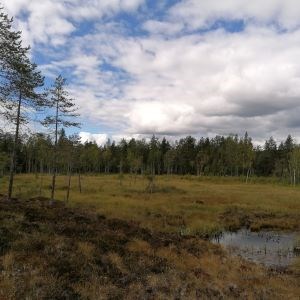Facts:
The project is funded by Oscar and Lili Lamm foundation during 2020–2023.

This project investigates restoration of formerly drained forest wetlands and its effect on the brownification of surface waters.
Large wetland areas in Sweden have been artificially drained by ditching during the past centuries to increase timber production. For a significant part of these areas, no production increase has occurred. These areas have recently been suggested as potential areas for restoration as a way to improve biodiversity, mitigate hydrological floods or droughts and to reduce GHG emissions. However, limited information exists regarding the effects of wetland restoration on other types of ecosystem services such as water quality. One of the most emerging issues from a water quality perspective is the brownification of many surface waters across the northern hemisphere.
The project aims to answer:
Intensive multi-year stream water monitoring will be made in connection to a newly restored boreal wetland. This will be combined with regional efforts to compare restored and non-restored wetlands in the forested landscape.
The project is funded by Oscar and Lili Lamm foundation during 2020–2023.